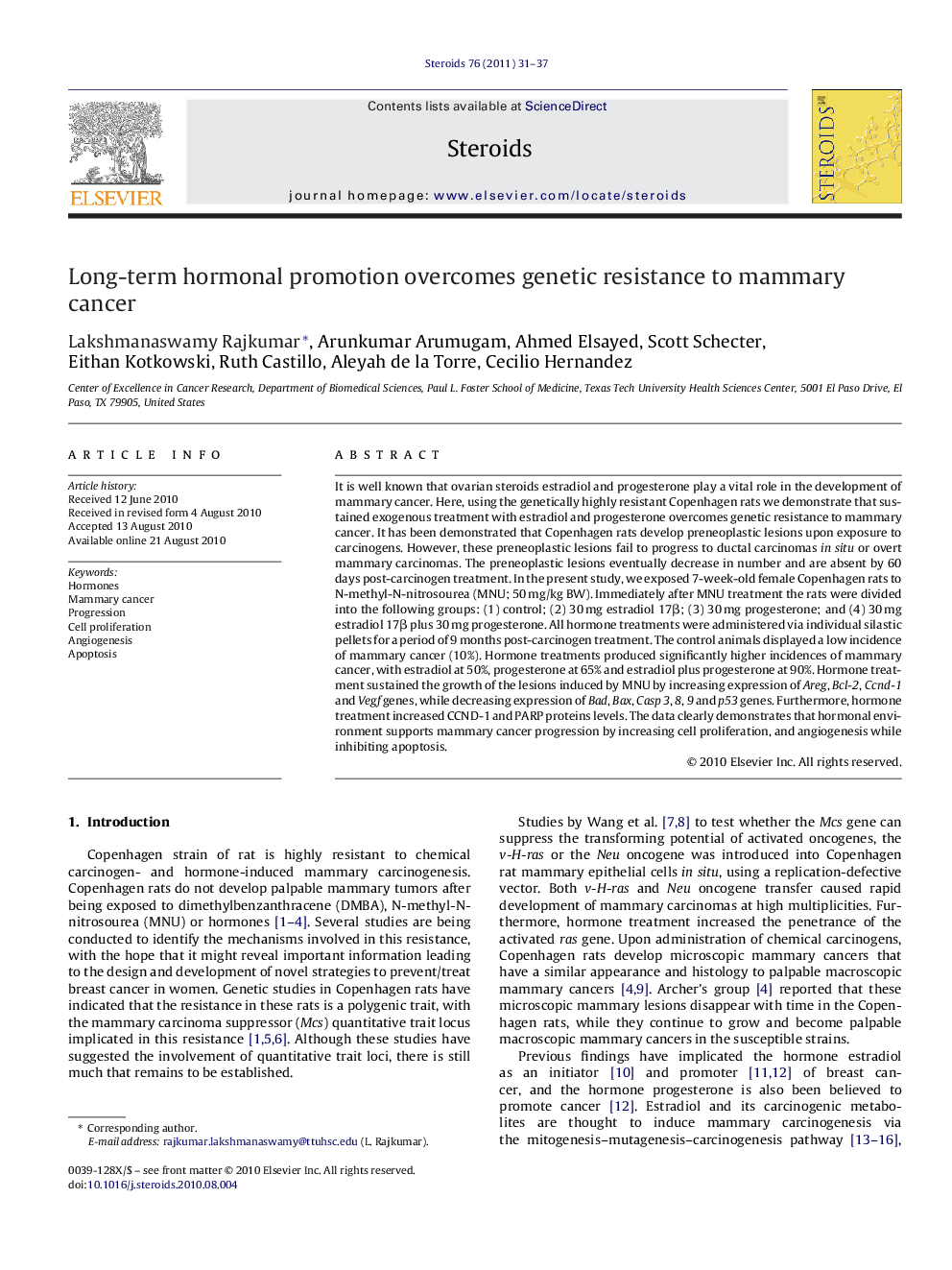| Article ID | Journal | Published Year | Pages | File Type |
|---|---|---|---|---|
| 2028772 | Steroids | 2011 | 7 Pages |
It is well known that ovarian steroids estradiol and progesterone play a vital role in the development of mammary cancer. Here, using the genetically highly resistant Copenhagen rats we demonstrate that sustained exogenous treatment with estradiol and progesterone overcomes genetic resistance to mammary cancer. It has been demonstrated that Copenhagen rats develop preneoplastic lesions upon exposure to carcinogens. However, these preneoplastic lesions fail to progress to ductal carcinomas in situ or overt mammary carcinomas. The preneoplastic lesions eventually decrease in number and are absent by 60 days post-carcinogen treatment. In the present study, we exposed 7-week-old female Copenhagen rats to N-methyl-N-nitrosourea (MNU; 50 mg/kg BW). Immediately after MNU treatment the rats were divided into the following groups: (1) control; (2) 30 mg estradiol 17β; (3) 30 mg progesterone; and (4) 30 mg estradiol 17β plus 30 mg progesterone. All hormone treatments were administered via individual silastic pellets for a period of 9 months post-carcinogen treatment. The control animals displayed a low incidence of mammary cancer (10%). Hormone treatments produced significantly higher incidences of mammary cancer, with estradiol at 50%, progesterone at 65% and estradiol plus progesterone at 90%. Hormone treatment sustained the growth of the lesions induced by MNU by increasing expression of Areg, Bcl-2, Ccnd-1 and Vegf genes, while decreasing expression of Bad, Bax, Casp 3, 8, 9 and p53 genes. Furthermore, hormone treatment increased CCND-1 and PARP proteins levels. The data clearly demonstrates that hormonal environment supports mammary cancer progression by increasing cell proliferation, and angiogenesis while inhibiting apoptosis.
Research highlights▶ Long-term treatment with ovarian steroids overcomes genetic resistance against breast cancer. ▶ Long-term hormone treatment promotes the growth of microscopic mammary lesions. ▶ This model shall be very useful to understand the mechanism of hormonal promotion of breast cancer.
